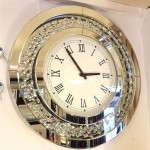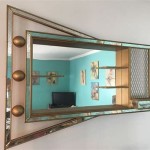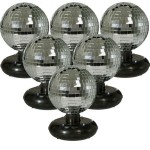What Are Parabolic Mirrors Used For?
Parabolic mirrors, with their unique reflective properties stemming from their parabolic shape, find applications in a wide range of fields, from harnessing solar energy to exploring the cosmos. Their ability to focus incoming parallel rays to a single point, known as the focus, or conversely, to collimate light emanating from the focus into a parallel beam, makes them indispensable in numerous technologies.
One of the most prominent applications of parabolic mirrors is in solar energy collection. Large parabolic troughs, composed of numerous smaller parabolic mirrors or a single large curved surface, are employed in concentrated solar power (CSP) plants. These troughs track the sun throughout the day, concentrating sunlight onto a receiver tube located at the focal line. The concentrated solar radiation heats a fluid within the receiver, which is then used to generate steam, driving turbines to produce electricity. This efficient method of harnessing solar energy offers a renewable energy source with significant potential.
Reflecting telescopes represent another significant application of parabolic mirrors. In these telescopes, a large parabolic mirror serves as the primary mirror, collecting and focusing faint light from distant celestial objects. The focused light is then reflected by a secondary mirror to the eyepiece or instruments for observation and analysis. The larger the diameter of the parabolic mirror, the more light the telescope can gather, allowing astronomers to observe fainter and more distant objects in the universe.
Parabolic mirrors are also crucial components in satellite communication. Satellite dishes, commonly found on rooftops, utilize parabolic reflectors to receive microwave signals transmitted from satellites orbiting the Earth. The parabolic shape of the dish ensures that the weak microwave signals are reflected and concentrated onto a small receiving antenna located at the focus. This concentration of signals allows for clear and reliable communication, enabling television reception, internet access, and other forms of data transmission.
In the realm of lighting and heating, parabolic reflectors are employed to control and direct the light emitted from a source. Spotlights and headlights incorporate parabolic reflectors positioned behind the lightbulb. The reflector collimates the diverging light rays from the bulb into a directed beam, providing focused illumination. Similarly, parabolic reflectors find application in heat lamps, concentrating infrared radiation onto a specific area to provide localized heating. The parabolic shape ensures efficient and targeted delivery of both light and heat.
Radar systems also rely on parabolic reflectors. These systems transmit electromagnetic waves, and the reflected waves, received by the same parabolic antenna, provide information about distant objects. The parabolic shape of the antenna focuses the transmitted waves into a narrow beam and efficiently collects the reflected signals, allowing for accurate detection and tracking of targets, crucial for applications like air traffic control and weather forecasting.
Solar cookers represent a simpler, yet effective application of parabolic mirrors. These devices use a parabolic reflector to concentrate sunlight onto a cooking pot placed at the focus. The concentrated solar energy heats the pot, allowing for food to be cooked without the need for conventional fuel sources. This offers a sustainable cooking solution, particularly in regions with abundant sunlight.
Microphone technology also benefits from the properties of parabolic mirrors. Parabolic microphones utilize a large parabolic dish to collect and focus sound waves onto a microphone placed at the focus. This configuration allows for the capture of sounds from a distance with high directionality, effectively isolating the desired sound source from background noise. These microphones are particularly helpful in recording wildlife sounds, capturing audio at sporting events, and in surveillance applications.
Beyond these common applications, parabolic mirrors are also employed in scientific research and specialized technologies. For example, they are used in optical experiments involving focusing laser beams and creating specific light patterns. In medical devices, parabolic mirrors are integrated into systems for targeted drug delivery and precise surgical procedures. Their versatile nature makes them a crucial element in a continuously expanding range of applications.
The effectiveness of a parabolic mirror relies heavily on its precision. Imperfections in the parabolic shape can lead to distortions and reduced efficiency in focusing or collimating light. Therefore, manufacturing processes for parabolic mirrors often involve high precision techniques to ensure accurate shaping and optimal performance. The choice of material also plays a significant role, depending on the intended application and the wavelength of the radiation being reflected.

What Is Parabolic Mirror Quora

Spherical Parabolic Mirrors

Spherical Vs Parabolic Mirror Focal Regions
What Are The Differences Between A Parabolic Mirror And Concave Quora

Parabolic Mirror Design Ofh
What Is The Difference Between A Parabolic And Spherical Telescope Quora

Spherical Vs Parabolic Mirror Focal Regions

What Is Parabolic Reflector Antenna Working Radiation Pattern Advantages Disadvantages And S Of Electronics Desk

Schematic Of The Proposed Setup Parabolic Mirror Solar Concentrator Scientific Diagram

Solar Ray Parabolic Mirror 55 7 Paraboloid Steam Generator Concave








